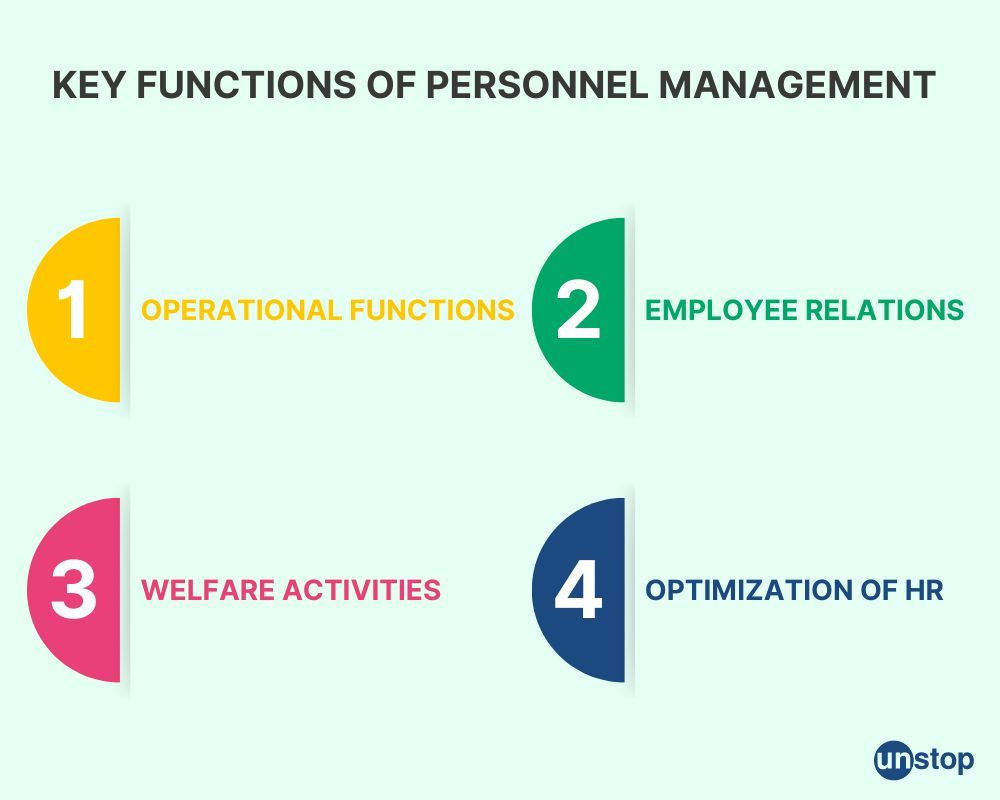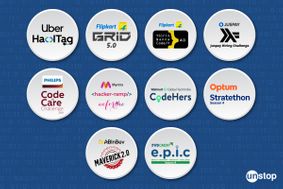Table of content:
- What is Human Resource Management (HRM)?
- Importance of HRM in an Organization
- What are the key Objectives of HRM?
- What are the main functions of HRM?
- Scope of HRM in an Organization
- Role Of HRM in an Organization
- Technology Integration & Future Trends in HRM
- Career Paths In Human Resource Management
- Conclusion
- Frequently Asked Questions (FAQs)
Table of content:
- Simulation Training: Understanding the Concept
- Evolution of Training Methodologies
- Benefits of Simulation Training
- Implementing Simulation Training in Organizations
- Future Simulation Training Trends
- Summing Up
- Frequently Asked Questions
Table of content:
- What is Performance Appraisal in the Workplace?
- What is the Purpose of Performance Appraisal?
- Types of Performance Appraisal
- Methods of Performance Appraisal
- What is 360-degree Feedback in Performance Appraisal?
- Behaviorally Anchored Rating Scales (BARS)
- What is MBO in Performance Appraisal?
- Effectiveness of Self & Peer Assessments in Performance Appraisal
- Criticisms & Limitations Of Performance Appraisal
- Conclusion
- Frequently Asked Questions (FAQ)
Table of content:
- Job Analysis: Definition & Importance
- Job Analysis: Key Components
- Identifying The Right Moment For Job Analysis
- Navigating Job Analysis Process
- Distinguishing Job Analysis & Evaluation
- Using The Findings Of Job Analysis
- Conclusion
- Frequently Asked Questions (FAQs)
Table of content:
- Deciphering Training & Development
- Difference Between Training, Development & Learning
- Significance Of Training & Development In HRM
- Benefits Of Training & Development For Organizations
- Types & Methods Of Employee Training
- Building Blocks Of Training Programs
- Trends & Innovation In Employee Training
- Strategic Integration With Talent Management
- Addressing Challenges In Training & Development
- Frequently Asked Questions (FAQs)
Table of content:
- Understanding Strategic Human Resource Management
- Scope Of Strategic Human Resource Management
- Creating A Strategic HR Plan In 7 Steps
- Different Approaches To Strategic Human Resource Management
- Importance Of Strategic Human Resource Management
- Characteristics Of Strategic Human Resource Management
- Frequently Asked Questions (FAQs)
Table of content:
- What is Selection Procedure in HRM?
- Stages Of Selection Procedure In HRM
- Making Informed Decisions With Job Offers
- Onboarding Strategies For New Hires
- Best Practices In Selection Procedure
- Conclusion
- Frequently Asked Questions (FAQs)
Table of content:
- Definition Of Human Resource Planning
- Understanding The Essence Of Human Resource Planning
- Key Objectives & Importance Of Human Resource Planning
- Strategic Alignment Of Human Resource Planning
- Core Steps Involved In Human Resource Planning Process
- Analyzing Labor Market Dynamics
- Tools & Techniques For Human Resource Planning
- Common Challenges & Solutions In Human Resource Planning
- Future Trends Influencing Human Resource Planning
- Measuring Success & Progress In Human Resource Planning
- Frequently Asked Questions (FAQs)
Table of content:
- Concept & Purpose Of Job Evaluation
- Overview Of Job Evaluation Methods
- Importance Of Implementing A Job Evaluation System
- Steps To Conduct A Thorough Job Evaluation
- Selecting Appropriate Method For Job Evaluation
- Establishing Job Evaluation Committee
- Advantages & Limitations Of Job Evaluation Techniques
- Maintaining & Updating Job Evaluation Process
- Frequently Asked Questions (FAQs)
Table of content:
- What is Training Needs Analysis?
- Purpose of Training Needs Analysis
- What are the Types of Training Needs Analysis?
- 7 Key Steps to Conduct Training Needs Analysis
- Methods of Data Collection for TNA
- What are the Benefits of Training Needs Analysis?
- Conclusion
- Frequently Asked Questions (FAQ)
Table of content:
- Types of Training Methods
- On-the-Job Training Methods (Learning by Doing)
- Off-the-Job Training Methods (Structured Learning)
- Microlearning & Mobile Learning
- Peer-to-Peer & Self-Directed Learning
- Choosing The Right Method
- Traditional Vs Modern Training Techniques
- Evaluating The Different Types Of Training Methods
- The Future of Training
- Conclusion
- Frequently Asked Questions (FAQs)
Table of content:
- What is Job Design in HRM?
- Methods of Job Design: Key Strategies
- The Impact of Taylorism on Job Design
- Hackman and Oldham Model or the Job Characteristics Model
- Socio-Technical Systems and Job Design
- The Job Design Process: Best Practices
- Things to Keep in Mind for an Effective Job Design Process
- Conclusion
- Frequently Asked Questions (FAQs)
Table of content:
- Defining Training and Development
- Difference between Training and Development
- Similarities between Training and Development
- Importance of Training and Development
- Key Aspects of Effective Training Programs
- Formulting Effective Development Strategies
- Frequently Asked Questions (FAQs)
Table of content:
- Key Challenges in Human Resource Management
- Addressing HRM Challenges Globally
- Legal and Regulatory Compliance in HRM
- Enhancing Productivity in HRM
- HRM Challenges in India
- Strategic Role of HR Leaders
- Technological Advancements in HRM
- Diversity and Inclusion in the Workplace
- Conclusion
- Frequently Asked Questions
Table of content:
- Defining Sourcing in Recruitment
- Internal Sources of Recruitment
- External Source of Recruitment
- Internal Sources of Recruitment: Advantages & Disadvantages
- External Source of Recruitment: Advantages & Disadvantages
- Innovative Recruitment Channels in the Digital Era
- Frequently Asked Questions (FAQs)
Table of content:
- What is Human Capital?
- Human Capital Theory Explained
- Human Capital and Economic Growth
- Measuring Human Capital
- Human Capital Formation
- Human Capital Management Strategies
- Role of Education in Human Capital Formation
- Critiques of Human Capital Theories
- Future of Human Capital in Business
- Conclusion
- Frequently Asked Questions
Table of content:
- What is the Meaning of Wages?
- Concept of Wages
- Components & Calculation Of Wages
- Overview Of Theories of Wage Determination
- What is Minimum Wage?
- What is the Difference Between Wages & Salary?
- Types Of Wages
- Factors Affecting Wage Rates
- Exploring Wage Disparities & Their Effects
- Wage Trends & Implications In The Workforce
- Frequently Asked Questions (FAQs)
Table of content:
- Definition Of Training Evaluation
- Understanding Training Evaluation Models
- Different Types Of Training Evaluation Methods
- Importance & Benefits Of Training Evaluation
- Formative Vs Summative Training Evaluation
- Creating An Effective Training Evaluation In Simple Steps
- Strategies For Employee Training Evaluation
- CIPP & Kaufman's Models In Training Evaluation
- Measuring & Analyzing Training Outcomes
- Best Practices For Conducting Training Evaluation
- Frequently Asked Questions (FAQs)
Table of content:
- Definitions Of Wage & Salary Administration
- Objectives Of Wage & Salary Administration
- Principles Of Wage & Salary Administration
- Elements of An Effective Wage & Salary System
- Steps For Determining Wage Rates
- Conducting Wage & Salary Surveys
- Factors Influencing Wage & Salary Levels
- Formulating A Comprehensive Wage Policy
- Frequently Asked Questions (FAQ)
Table of content:
- Meaning Of HR Professional
- Role Of An HR Professional
- Essential Skills Of Successful HR Professionals
- Effective Communication In HR Professionals
- Decision-Making & Problem-Solving In HR Professionals
- Frequently Asked Questions (FAQs)
Table of content:
- Definition & Evolution Of HRMS
- Understanding The Core Functionalities Of HRMS
- Key Features & Components Of HRMS
- Benefits & Importance Of Implementing HRMS
- Security Measures & Data Protection In HRMS
- Role Of Artificial Intelligence In HRMS
- Choosing The Right HRMS For Your Organization
- Frequently Asked Questions (FAQs)
Table of content:
- Definition Of Job Characteristics Model
- Hackman And Oldham Job Characteristics Model
- Five Core Job Characteristics Model Explained
- Psychological States & Work Outcomes in JCM
- Autonomy & Role In Job Satisfaction
- Task Significance
- Impact Of Feedback On Job Performance
- Factors Influencing The JCM's Effectiveness
- Practical Implications For SEO Content Writing
- Frequently Asked Questions (FAQs)
Table of content:
- Definition Of Executive Compensation
- Basics Of Executive Compensation
- Key Components Of Executive Compensation
- Purpose Of Compensation Packages
- Role Of Executive Compensation
- Types & Structures Of Executive Compensation Plan
- Short, Medium & Long-Term Compensation
- Trends & Regulations
- Best Practices For Executive Compensation
- Corporate Strategy & Governance
- Controversies & Criticisms
- Frequently Asked Questions (FAQs)
Table of content:
- Defining Employee Relations
- Importance Of Employee Relations Management
- Strategies For Effective Employee Relations
- Role Of An Employee Relations Specialist
- Resolving Workplace Disputes & Conflicts
- Addressing Wage Concerns & Policy Clarification
- Legal Compliance & Employee Relations Management
- Frequently Asked Questions (FAQs)
Table of content:
- Definition Of International Human Resource Management
- Concepts & Objectives Of IHRM
- Understanding The Scope Of IHRM
- Cultural Dimensions In Global HR Management
- Selection & Training IHRM
- Ethical & Legal Issues In IHRM
- Strategies For Effective IHRM Implementation
- Challenges & Future Of International HRM
- Importance Of Global HRM Functions
- Comparison of HRM and IHRM Functions
- Frequently Asked Questions (FAQs)
Table of content:
- Importance Of Executive Development In HRM
- Methods Of Executive Development
- Objectives Of Executive Development
- Importance & Benefits Of Individualized Development Programs
- Frequently Asked Questions (FAQs)
Table of content:
- Defining Personnel Management & Objectives
- Key Functions Of Personnel Management
- Roles & Duties Of A Personnel Manager
- Personnel Management Vs. HRM
- Approaches & Policies In Personnel Management
- Manpower Planning, Recruitment & Selection Processes
- Training & Development Within Personnel Management
- Analysing Current Trends In Personnel Management
- Frequently Asked Questions (FAQs)
Table of content:
- What do you mean by Job Evaluation?
- What Are the Importance of Job Evaluation Methods?
- Best 7 Job Evaluation Methods in HRM
- Role Of Market Pricing In Job Evaluation
- Advantages & Disadvantages Of Job Evaluation Methods
- Career Progression, Legal Considerations & Compliance
- Best Practices For Job Evaluations
- Conclusion
- Frequently Asked Questions (FAQs)
Table of content:
- Defining Personnel Management & Human Resource Management
- Evolution Of Personnel Management To HRM
- Strategic Focus & Scope In PM & HRM
- Employee Relations In PM Vs. HRM
- Roles & Responsibilities In PM Vs. HRM
- Proactive & Reactive Approaches In PM & HRM
- Employee Development & Motivation In PM Vs. HRM
- Decision-Making & Authority In PM Vs. HRM
- Implications Of PM & HRM On Organizational Success
- Frequently Asked Questions (FAQs)
Table of content:
- Introduction to Kirkpatrick Model
- Origin & Evolution of the Kirkpatrick Model
- Importance of the Kirkpatrick Model
- Implementing the Kirkpatrick Model Training Evaluation
- Measuring Reaction: The First Level of Evaluation
- Assessing Learning: The Second Level Explained
- Evaluating Behavior Change: The Third Level of Impact
- Analyzing Results: The Fourth Level of Training Effectiveness
- Balancing Limitations in the Kirkpatrick Model
- Final Remarks
- Frequently Asked Questions (FAQs)
Table of content:
- Exploring The Concept Of Salary
- Key Differences Between Wages And Salary
- Types Of Wages & Their Impact on Earnings
- Varieties Of Salary Structures
- Advantages Of Earning Wages
- Benefits Of Receiving A Salary
- Legal Distinctions In Wage & Salary
- Overtime Compensation In Wage & Salary
- Frequently Asked Questions (FAQs)
Table of content:
- Fringe Benefits Meaning & Objectives
- Examples & Types Of Fringe Benefits
- Necessity Of Fringe Benefits By Law
- Tax Implications For Various Fringe Benefits
- Valuing & Calculating Fringe Benefits
- Role Of Cafeteria Plans In Fringe Benefits
- Impact Of Fringe Benefits On Employees
- Business Impact Of Fringe Benefits
- Considerations In Offering Fringe Benefits
- Conclusion
- Frequently Asked Questions (FAQs)
Table of content:
- What Is HR Compliance & Importance
- Key Elements Of An HR Compliance Checklist
- Managing HR Compliance In The Workplace
- Conducting An Effective HR Compliance Audit
- Overcoming Challenges In HR Compliance
- Automation For Streamlined HR Compliance
- Best Practices For Enforcing HR Compliance
- Long-term Data Governance In HR Compliance
- Frequently Asked Questions (FAQs)
Table of content:
- What is Recruitment Process In HRM?
- 5 Essential Stages of Recruitment & Selection Process
- Identifying Vacancies & Crafting Effective Job Descriptions
- Job Portals, Social Media & Technology in Recruitment
- Internal Vs External Sources of Recruitment
- Strategies for effective Recruitment in HRM
- Psychometric Tests used in Recruitment
- Conclusion
- Frequently Asked Questions (FAQs)
What Is Personnel Management | Definition, Functions & Approaches

Personnel management involves ensuring that a company's human resources are well-coordinated and effectively used.
Understanding what personnel management entails is essential for businesses seeking to optimize their human capital and foster a positive work environment.
Defining Personnel Management & Objectives
Let us study the definition and objectives of personnel management:
Definition Of Personnel Management
Personnel management refers to the process of effectively managing and overseeing the employees within an organization.
It involves activities like hiring new employees, providing training, assessing performance, and making sure that labor laws and regulations are followed.
Main Objective Of Personnel Management
The main aim of personnel management is to ensure that the right people are in the right jobs. This is achieved by providing a positive working environment, promoting employee satisfaction, and ultimately contributing to the overall success of the organization.
Maximizing Employee Performance
Personnel management is all about managing employees to ensure the smooth functioning of an organization.
One of its key objectives is maximizing employee performance.
Personnel management involves making the work environment good, giving the things needed for work, and providing training and chances to grow.
By focusing on making employees do their best, companies can make more things and reach their goals better. Personnel management also wants to make a good workplace culture that makes employees want to do well in their jobs.
For example, this could involve implementing performance appraisal systems to recognize and reward high-performing individuals.
By doing so, organizations can motivate their employees to deliver outstanding results while feeling valued for their contributions consistently.
Ensuring A Productive Workforce
Another crucial objective of personnel management is ensuring a productive workforce. This encompasses various aspects such as effective workforce planning, proper job design, resource allocation, and conflict resolution within teams.
Strategic workforce planning helps organizations match their staffing needs with business goals, preventing problems from having too few or too many staff.
By fostering healthy communication channels and implementing fair grievance redressal mechanisms, personnel managers contribute to maintaining a harmonious work environment where everyone can focus on contributing positively towards the organization's success.
Key Functions Of Personnel Management
Let us study the essential functions and scope of personnel management:

Operational Functions
Personnel management is all about planning, organizing, directing, and controlling. These elements are crucial for overseeing a company's workforce. Planning involves determining the current and future staffing needs based on the company's objectives.
Organizing includes creating job roles, forming departments, and establishing reporting lines to ensure a smooth workflow. Directing focuses on guiding employees to achieve organizational goals through effective leadership and communication.
Monitoring employee performance, adherence to company policies and regulations, and creating a productive work environment are all part of controlling personnel management.
Employee Relations & Welfare Activities
Personnel management involves the important task of handling employee relationships. This means creating positive connections among all staff in a company to make a friendly workplace. It also involves putting in place different activities to improve the general welfare of employees.
These activities may include giving medical benefits, organizing training programs for improving skills, and offering opportunities for career growth like workshops or seminars.
Optimization Of Human Resource Potential
One of the primary focuses in personnel management is optimizing human resource potential within an organization. This involves aligning individual employee skills with their respective job roles to maximize productivity.
Understanding each employee's strengths and weaknesses through proper assessment methods like performance appraisals or feedback sessions can lead to more efficient utilization of talent within an organization.
Moreover, identifying areas where additional training or support is needed can help enhance overall workforce capabilities, which ultimately contributes to achieving organizational goals efficiently.
Roles & Duties Of A Personnel Manager
Let us study in detail the role and duties of a personal manager in personnel management:

Recruitment, Training & Performance Evaluation
Personnel managers play an indispensable role in the recruitment process by identifying the organization's staffing needs and finding suitable candidates to fill those positions.
Personnel managers are in charge of making job descriptions, carrying out interviews, and picking the best candidates for different positions in the company. After new employees are hired, they supervise their training and development to ensure they have the necessary skills to do well in their jobs.
They regularly assess employee performance through performance evaluations to identify areas that need improvement or further development.
Personnel managers help employees stay in the company by offering continuous help and chances for career advancement.
By investing in training programs and offering professional development opportunities, they help employees feel valued while enhancing their skills and knowledge base.
Handling Grievances & Maintaining Workplace Harmony
Another essential aspect of a personnel manager's role is handling workplace conflicts or grievances among employees. They act as mediators when disputes arise between individuals or teams within the organization.
This involves actively listening to both parties involved, understanding their perspectives, and working towards an amicable resolution that promotes harmony in the workplace.
Personnel managers aim to foster a workplace atmosphere that is supportive, respectful, and motivating for employees, in addition to addressing conflicts.
They implement strategies aimed at fostering teamwork and collaboration while addressing any issues that may hinder productivity or morale.
Ensuring Compliance with Labor Laws & Regulations
Compliance with labor laws is paramount in every organization's operations. A key responsibility of personnel managers is ensuring that all employment practices adhere to relevant labor laws and regulations set forth by governmental bodies, such as equal opportunity employment laws, safety standards, wage policies, etc.

These professionals stay updated on changes in legislation related to human resources management and then advise organizational leadership on how these changes could impact business operations.
This helps prevent potential legal complications arising from non-compliance
By staying abreast of legislative developments relating to human resources management, personnel managers demonstrate commitment to upholding ethical business practices, protecting both employers and employees alike.
Personnel Management Vs. HRM
Let us study the typical differences between personnel management and HRM:
Administrative Nature
Personnel management primarily deals with the administrative tasks related to employees. This includes activities such as payroll, attendance tracking, and ensuring compliance with labor laws.
In contrast, Human Resource Management (HRM) looks at the bigger picture, focusing on long-term planning and how to align the employees with the overall goals and objectives of the organization.
Rather than just concentrating on daily tasks, HRM aims to strategize how human resources can contribute to the company's success in the long term.
Strategic Alignment
In personnel management, there is less emphasis on strategic alignment between employees and business objectives. The focus is mainly on overseeing routine administrative tasks like recruitment, training, and performance evaluation without necessarily linking them directly to broader organizational strategies.
Conversely, HRM places significant importance on aligning human resources with business goals. This means that decisions regarding hiring, training programs, and performance evaluations are made while considering their impact on achieving the company's strategic objectives.
For instance, HR professionals might design training programs that specifically address skill gaps identified as barriers to reaching organizational targets.
Employee Development
In traditional personnel management, the main focus is to ensure that employees meet basic job requirements and legal obligations such as safety training.
However, in HRM, the emphasis is on continuously assisting employees in their learning and development based on the organization's needs.
This may involve creating career advancement plans tailored to individual goals while equipping them with the skills necessary for the organization's growth.
Approaches & Policies In Personnel Management
Let us also see some of the approaches and policies in personnel management:
Traditional Approach
Personnel management, in its traditional approach, relies heavily on rules and procedures to govern the workforce. This method focuses on maintaining order and consistency within the organization.
For instance, it involves creating strict guidelines for employee conduct, performance expectations, and disciplinary actions.
In the old-fashioned way, there's a structure with levels of authority where the top management makes all the decisions.
In this model, the emphasis is placed on ensuring that work gets done efficiently without much consideration for individual growth or fulfillment.
Modern Approach
Conversely, the modern approach to personnel management places significant importance on employee development and empowerment. It recognizes that investing in employees' skills, knowledge, and well-being can lead to improved productivity and job satisfaction.
The current approach is focused on making sure that employees feel appreciated and motivated in their work environment.
For instance, up-to-date personnel management could involve offering chances for ongoing learning through training programs or mentorship efforts.
Policies Covering Key Areas
Personnel management policies cover important areas for effectively managing a productive workforce.
These policies address aspects like compensation, which outlines how employees are remunerated for their work—whether through salaries, bonuses, or incentives based on performance.
Moreover, policies related to benefits ensure that employees receive essential perks from their employers, such as health insurance coverage or retirement plans.
Manpower Planning, Recruitment & Selection Processes
Let us study three essential aspects of personnel management:
Forecasting Future Manpower Needs
Managers use various methods like trend analysis and workforce modeling to predict future staffing needs accurately.
For example, if a company plans to expand its operations in a new market segment, it must forecast how many workers will be needed and what specific roles they should fulfill.
Recruitment Aims
The hiring process is super important in personnel management because it tries to get the right people with the skills and qualifications needed for jobs in a company. This means making good job ads that explain clearly what the job involves and what skills are needed.
Recruiters use different ways, like online job sites, social media, job fairs, or hiring companies, to find possible candidates. They might also use ads to attract people with specific skills or experience.
Selection Processes
After finding the right people through hiring, companies use strict methods to make sure they choose employees who are not only qualified but also fit in with the company's way of doing things.
This involves looking at resumes, doing interviews, giving tests, checking references, and making sure everything follows the rules.
Training & Development Within Personnel Management
Personnel management relies on training and development to make sure employees have the necessary skills for their current roles and future tasks, ultimately boosting the organization's effectiveness.
Enhancing Employee Skills & Knowledge
Personnel management training is really important because it helps employees learn new skills and knowledge. This kind of training helps make sure that employees have the right skills to do their jobs well.
For example, a company might give its IT staff training on the newest software or hardware. This not only helps the employees but also makes the whole company work better.
Offering Development Opportunities
Personnel management also includes giving chances for growth that focus on long-term career advancement rather than just immediate job-related skills. This may include creating programs to help people become leaders or providing mentorship to prepare them for future roles in the company.
For example, the top management could identify employees with great potential and give them opportunities such as executive coaching or involvement in special projects to help them develop their skills.
Benefits Of Training & Development
When employees receive adequate training tailored to their roles, they become more confident in performing their tasks efficiently.
Furthermore, when organizations invest in developing their workforce's potential through various developmental programs, it fosters a culture of continuous learning and improvement.
This approach not only empowers individual employees but also nurtures team spirit within the organization as everyone strives toward personal growth alongside achieving collective goals.
Analysing Current Trends In Personnel Management
Let us study how personnel management has evolved to date:
Embracing Technology For HR Processes
Personnel management has evolved with the growth of technology as organizations increasingly utilize digital tools for recruitment, employee data management, and performance evaluation.
For example, applicant tracking systems help sort through resumes efficiently and identify the most qualified candidates. This technological advancement not only saves time but also ensures that the best talent is hired.
Moreover, technology facilitates remote work arrangements and flexible scheduling options. These advancements in personnel management contribute to improved employee well-being, job satisfaction, and work-life balance.
Diversity & Inclusion Initiatives
In today's business landscape, diversity and inclusion are integral components of successful personnel management strategies. Companies that value diversity benefit from a wider range of viewpoints, which helps teams come up with new ideas.
When companies create a culture where everyone feels important no matter who they are, employees feel like they belong.
For example, having programs that help support groups that are not represented as much can help employees feel more motivated and get guidance on how to grow in their careers within the company.
Furthermore, when employees feel connected to their colleagues without experiencing discrimination or biases based on race or gender identity, they are more likely to be engaged at work.
Employee Well-Being Programs
Employee well-being programs have emerged as an important contributor to organizational success within modern personnel management practices.
Companies that invest in employee wellness initiatives witness reduced turnover rates due to increased job satisfaction among staff members who feel supported in achieving both personal and professional goals.
Conclusion
The exploration of personnel management has provided a comprehensive understanding of its key functions, the roles of a personnel manager, and its differentiation from HRM.
This in-depth overview equips individuals with valuable insights into the critical aspects of personnel management, serving as a foundational resource for professionals and students alike.
Time For A Short Quiz
Frequently Asked Questions (FAQs)
1. What are the main objectives of personnel management?
Personnel management aims to effectively manage employee relations, ensure compliance with labor laws, enhance employee well-being, and optimize workforce productivity.
2. How does personnel management differ from HRM?
Personnel management is mainly about handling administrative duties and looking after employee well-being. On the other hand, HRM focuses on using strategic methods to oversee human resources and connect them with the goals of the organization.
3. What are the key functions of a personnel manager?
A personnel manager is responsible for recruitment, training, performance evaluation, grievance handling, maintaining employee records, and ensuring legal compliance in employment practices.
4. Why is manpower planning important within personnel management?
Manpower planning involves forecasting future staffing needs based on organizational goals. It ensures that the right people are in the right roles at the right time to support business objectives efficiently.
5. Explain how training and development contribute to organizational success within personnel management.
Employee training and development initiatives are essential for helping staff learn new skills, enhance their job performance, adjust to technological changes, encourage innovation, improve morale, and ultimately increase the overall effectiveness of the organization.
Suggested reads:
- Job Analysis: Definition, Significance & Process Explained
- Transforming Hiring Landscape - Harnessing AI And ML For Talent Acquisition
- Performance Appraisal | Comprehensive Guide To Methods & Benefits
- Succession Planning: A Comprehensive Guide for HR Professionals
- Human Resource Executive (HR) - As A Career Option
Instinctively, I fall for nature, music, humour, reading, writing, listening, travelling, observing, learning, unlearning, friendship, exercise, etc., all these from the cradle to the grave- that's ME! It's my irrefutable belief in the uniqueness of all. I'll vehemently defend your right to be your best while I expect the same from you!
Comments
Add commentLogin to continue reading
And access exclusive content, personalized recommendations, and career-boosting opportunities.









Ankita Das 4 weeks ago
Elizabeth jos 1 month ago